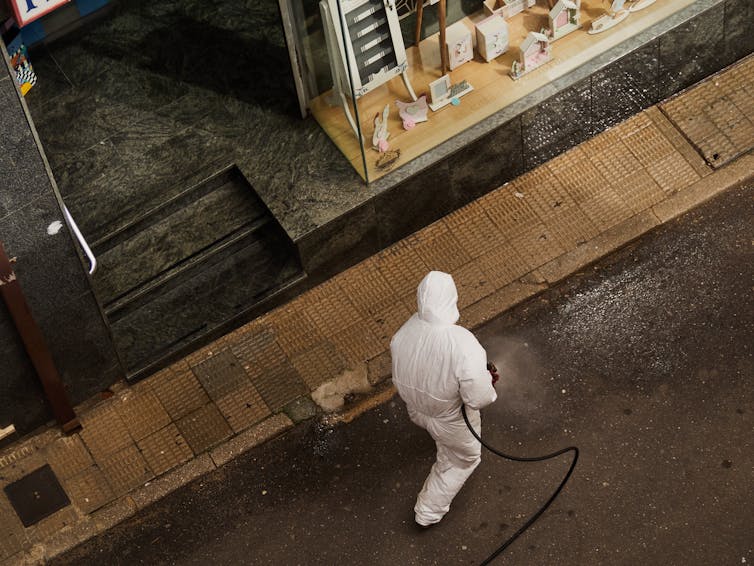The Coronavirus May Change How We Work for Good
Many of the tasks employees are doing now were not imagined even weeks ago. People are becoming crisis managers, sanitation monitors, and work-from-home co-ordinators.
Nearly a million people in Canada have already applied for employment insurance, and analysts are predicting that coronavirus-related jobless claims in the United States could exceed three million. Job loss is only one of the many effects of COVID-19 on work and workers.
These effects cascade beyond accelerating the ongoing work-from-home movement. Some of these changes could persist well beyond the pandemic itself. In the midst of COVID-19 and measures being taken to contain its impact, many employees are not just doing their jobs but transforming their job routines.
Coronavirus is eliminating the tasks that some employees normally do. There are no clients to consult, no trips to book, no students to teach, no concerts to perform and organize, no products to deliver, no new data to input.
Eliminating positions is one possible response to this shift. Another is for employees, together with their managers and coworkers, to rearrange work and take on different responsibilities.
Many of the tasks employees are doing now were not imagined even weeks ago. People are becoming crisis managers, sanitation monitors and work-from-home co-ordinators.

Meanwhile, workers in overrun government offices, hospitals, grocery stores, as well as those operating out of the public eye in supply chains, are having to find new ways of working that allow them to manage the onslaught of professional responsibilities they now face.
Startups will see deeper effects
While these effects are widespread, they are likely to be more extreme for people working in small enterprises, and especially in startups. Following the coronavirus-fuelled decline in financial markets, startup investors are facing new pressures and they’re passing them on to the entrepreneurs they’re funding.
The CEO of one startup I have been studying has been directed by his main investor to reduce costs by 50 per cent. He’s also closing a physical office, taking over product ownership, working to motivate and retain people in key positions and create some sense of social cohesion, all while mapping out a sales strategy for a marketplace that is in constant flux.
He’s doing all of this from home while helping home-school two young children. His days never had a predictable pattern before the pandemic but this represents a new extreme.

This startup’s operational shifts due to COVID-19 don’t end with the CEO’s job. The workers at his startup have been prepared in many ways. With three offices spread globally and an existing policy that encouraged occasional work from home, video-conferencing and remote work were nothing new.
But now all of his remaining employees are changing their work habits as they figure out how to replicate practices like face-to-face job interviews and informal contact.
What now?
Similarly, employees in more established organizations are also changing their work routines. An orchestra’s artistic co-ordinator I know went from anticipating putting in 90-hour weeks managing logistics for a concert series to a nearly blank slate, with little certainty about what work she should now be doing.
She started by unravelling arrangements for the week’s concerts and then regrouped. She shifted to working on the next wave of concerts but that was soon cancelled. She then moved to planning for next year’s programming but that still wasn’t enough to fill her hours.
Finally, she offered her services to help the marketing department with short translations and editing, and doubled down on efforts to launch a symphonic-composition competition that will help artists whose livelihoods have been hurt by the coronavirus.
Within my own university, the same as at other schools, instruction has moved from in-person classrooms to a remote format. The ripple effects are far-reaching.
Read more: Coronavirus pushes universities to switch to online classes — but are they ready?
Instructors are scrambling to convert materials, learning specialists are leading task forces and workshops to ease the transition and instructors with more remote-teaching experience are mentoring those who have none.
Meanwhile, researchers are working to find ways to do their research from home.
Restructuring work
Research suggests that creating work structures on the fly is not unusual. Various unexpected events — new technologies, regulations, labour disputes — and more quotidian surprises and problems provide occasions for the restructuring of work. But those events don’t come packaged with clear directives about how that work should be structured.
Following these shocks, those on the shop floor, at the lab bench or in the C-suite scramble to rearrange work, and sometimes those rearrangements become permanent.
For instance, in my research I show that, following the introduction of new automated DNA sequencing technology, work settled into different patterns across a series of labs as those using the new equipment daily created models for work arrangements.
Coronavirus is providing another requirement to restructure how we work. It remains to be seen when and how tasks will settle, and whether these changes will hurt or help workers.
This article is republished from The Conversation under a Creative Commons license. Read the original article.
Lisa Cohen is an associate professor or business administration at McGill University.
Image: Reuters

